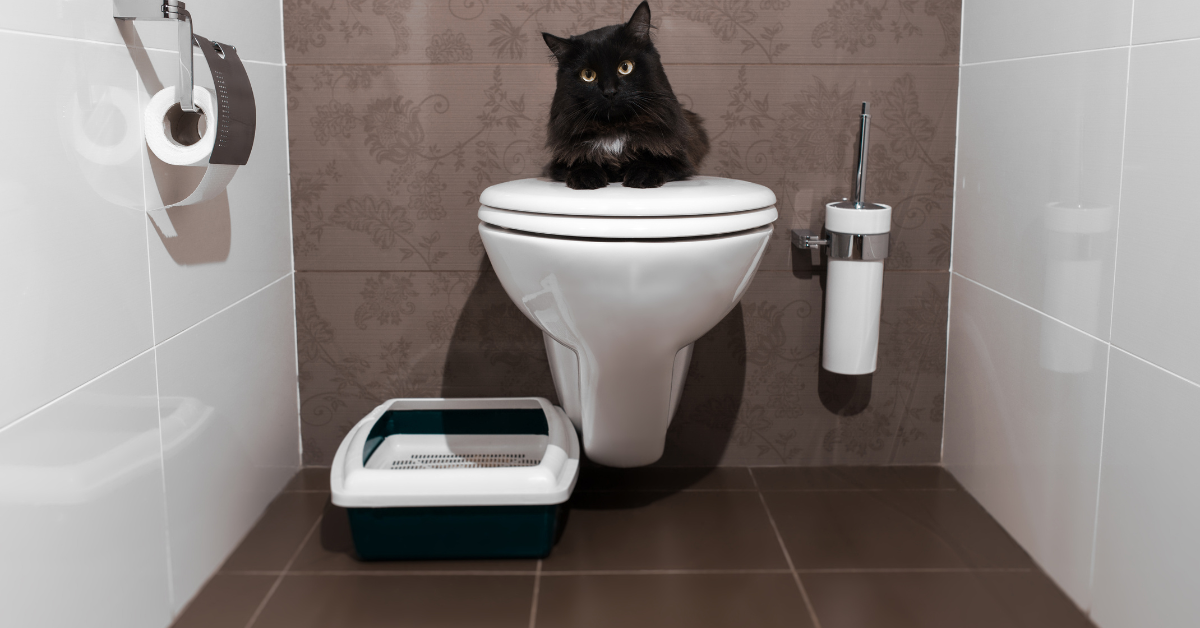Dangers of Flushing Cat Poop in Your Toilet - Precautionary Steps
Dangers of Flushing Cat Poop in Your Toilet - Precautionary Steps
Blog Article
The article listed below on the subject of Can You Flush Cat Poo or Litter Down the Toilet? is relatively entertaining. Check it out yourself and see what you think of it.

Intro
As cat owners, it's important to bear in mind how we deal with our feline close friends' waste. While it might seem practical to purge pet cat poop down the toilet, this practice can have damaging effects for both the environment and human health.
Alternatives to Flushing
Thankfully, there are safer and more responsible ways to get rid of feline poop. Think about the complying with alternatives:
1. Scoop and Dispose in Trash
The most typical technique of disposing of cat poop is to scoop it into a naturally degradable bag and throw it in the trash. Make certain to make use of a specialized clutter scoop and throw away the waste promptly.
2. Usage Biodegradable Litter
Opt for eco-friendly feline trash made from products such as corn or wheat. These trashes are eco-friendly and can be securely dealt with in the garbage.
3. Bury in the Yard
If you have a yard, take into consideration hiding feline waste in an assigned area away from veggie yards and water sources. Make sure to dig deep enough to stop contamination of groundwater.
4. Set Up a Pet Waste Disposal System
Invest in an animal waste disposal system especially made for cat waste. These systems make use of enzymes to break down the waste, reducing odor and ecological impact.
Health Risks
Along with environmental issues, flushing cat waste can additionally posture health risks to human beings. Feline feces may contain Toxoplasma gondii, a bloodsucker that can cause toxoplasmosis-- a potentially serious disease, specifically for expectant ladies and individuals with damaged body immune systems.
Environmental Impact
Flushing pet cat poop introduces dangerous microorganisms and parasites right into the water supply, presenting a considerable threat to water environments. These contaminants can adversely affect aquatic life and concession water high quality.
Conclusion
Liable pet possession expands beyond providing food and sanctuary-- it likewise entails proper waste monitoring. By refraining from purging feline poop down the commode and selecting different disposal techniques, we can lessen our environmental impact and protect human health and wellness.
Why Can’t I Flush Cat Poop?
It Spreads a Parasite
Cats are frequently infected with a parasite called toxoplasma gondii. The parasite causes an infection called toxoplasmosis. It is usually harmless to cats. The parasite only uses cat poop as a host for its eggs. Otherwise, the cat’s immune system usually keeps the infection at low enough levels to maintain its own health. But it does not stop the develop of eggs. These eggs are tiny and surprisingly tough. They may survive for a year before they begin to grow. But that’s the problem.
Our wastewater system is not designed to deal with toxoplasmosis eggs. Instead, most eggs will flush from your toilet into sewers and wastewater management plants. After the sewage is treated for many other harmful things in it, it is typically released into local rivers, lakes, or oceans. Here, the toxoplasmosis eggs can find new hosts, including starfish, crabs, otters, and many other wildlife. For many, this is a significant risk to their health. Toxoplasmosis can also end up infecting water sources that are important for agriculture, which means our deer, pigs, and sheep can get infected too.
Is There Risk to Humans?
There can be a risk to human life from flushing cat poop down the toilet. If you do so, the parasites from your cat’s poop can end up in shellfish, game animals, or livestock. If this meat is then served raw or undercooked, the people who eat it can get sick.
In fact, according to the CDC, 40 million people in the United States are infected with toxoplasma gondii. They get it from exposure to infected seafood, or from some kind of cat poop contamination, like drinking from a stream that is contaminated or touching anything that has come into contact with cat poop. That includes just cleaning a cat litter box.
Most people who get infected with these parasites will not develop any symptoms. However, for pregnant women or for those with compromised immune systems, the parasite can cause severe health problems.
How to Handle Cat Poop
The best way to handle cat poop is actually to clean the box more often. The eggs that the parasite sheds will not become active until one to five days after the cat poops. That means that if you clean daily, you’re much less likely to come into direct contact with infectious eggs.
That said, always dispose of cat poop in the garbage and not down the toilet. Wash your hands before and after you clean the litter box, and bring the bag of poop right outside to your garbage bins.
https://trenchlesssolutionsusa.com/why-cant-i-flush-cat-poop/

I discovered that piece on How to Dispose of Cat Poop and Litter Without Plastic Bags while scouting around the internet. Please take a moment to share this page if you enjoyed it. Thank you so much for taking the time to read it.
Schedule Estimate Report this page